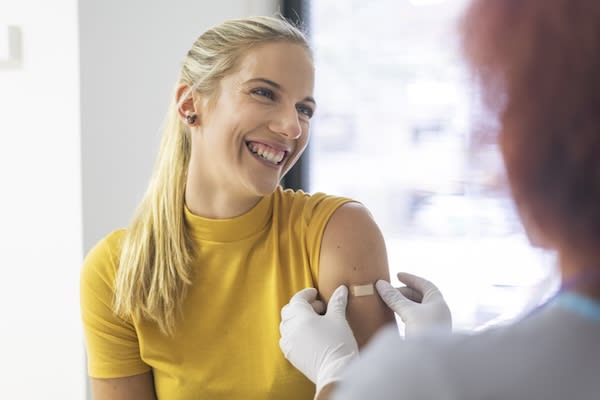Understanding scoliosis: Facts and insights

[5 MIN READ]
In this article:
-
Scoliosis is a curvature of the spine that’s generally diagnosed in adolescents.
-
Early diagnosis and intervention of scoliosis are important and can help prevent the need for surgery.
-
There are many ways to live and thrive with scoliosis.
Understanding scoliosis: Facts and insights
Scoliosis is a relatively common condition characterized by a curve in the spine. It’s most common in adolescents. You may not know what to expect following a scoliosis diagnosis, but many treatment options, including surgery, are available to help manage your condition.
“Treatment for scoliosis is very effective,” says Zachary Medress, M.D., a neurosurgeon with The Oregon Clinic Neurosurgery & Spine. “The course of treatment depends on the severity of your condition. Surgery is not always necessary to achieve a favorable outcome.”
What is scoliosis
Scoliosis is a condition that causes the spine to curve, often in an S shape. Your spine is made up of a series of bony structures called vertebrae. Your vertebrae are held together by soft tissue including intervertebral discs, muscles, ligaments and tendons. The flexibility of the spinal column allows us to bend and move.
Usually, the vertebrae and soft tissue form a vertical line. However, scoliosis causes your spine to curve and sometimes rotate like a corkscrew.
Who is affected by scoliosis
Scoliosis can occur at any age but generally affects adolescents between the ages of 10-15. Risk factors for scoliosis include:
- Age – The condition usually occurs around the onset of puberty.
- Family history – Scoliosis can run in families.
- Medical conditions – Children with cerebral palsy or muscular dystrophy can develop scoliosis.
- Sex – Females are more likely to develop scoliosis.
Unraveling the cause and types of scoliosis
Scoliosis affects roughly six million people in the United States. There are three types of scoliosis.
Idiopathic scoliosis
This is the most common type of scoliosis and the most common spinal deformity worldwide. Research indicates it is hereditary. Idiopathic is diagnosed when other forms of scoliosis have been excluded. Physicians classify idiopathic scoliosis into four types based on the age of diagnosis:
- Infantile idiopathic scoliosis – diagnosed in children between birth and three years old. This form of scoliosis only makes up 1% of pediatric cases.
- Juvenile idiopathic scoliosis – diagnosed between the ages of three and nine. This form of scoliosis accounts for 12-20% of pediatric idiopathic scoliosis.
- Adolescent idiopathic scoliosis – diagnosed in adolescents between 10 and 18 years old. This is the most common form of scoliosis diagnosed among children, making up 80% of pediatric cases.
- Adult idiopathic scoliosis – diagnosed in adults over 18 once they are done growing. It can develop due to degenerative changes.
Congenital scoliosis
Sometimes, doctors may diagnose babies with congenital scoliosis before birth, but it’s usually diagnosed after they’re born. Congenital scoliosis occurs when the bones that make up the spine don’t develop how they should.
Neuromuscular scoliosis
This form of scoliosis occurs alongside other neuromuscular (nerve) or muscular conditions, such as cerebral palsy, spina bifida or muscular dystrophy.
What causes scoliosis?
The cause of scoliosis depends on the type of scoliosis you have been diagnosed with but may include:
- A condition affecting your muscles or nerves.
- Birth defects affecting the development of your spine.
- Genetic changes.
- Injuries or infections that affect your spine.
- Spinal injury or damage.
- Tumors along the spine.
“In most cases, there is no known cause for scoliosis. Some research indicates that scoliosis runs in families,” says Dr. Medress.
Recognizing signs and symptoms
Most people with mild scoliosis do not experience pain. However, you may notice physical signs of scoliosis, including a change in posture.
“Although scoliosis can affect how people stand and carry themselves, it is a spinal deformity that should not be confused with poor posture. If you notice a change in posture, it’s worth seeing a physician,” says Dr. Medress.
Other signs of scoliosis include:
- Difference in shoulder height.
- Head is not centered with the rest of the body.
- One hip is higher than the other.
- One side of the rib cage protrudes forward.
- Pelvis appears tilted.
- Shoulders are uneven.
- Uneven waist.
If your scoliosis is more severe, the change in the shape of your spine can cause back pain. In rare cases, children with severe spine curvature may have trouble breathing.
Diagnosing scoliosis
Accurate diagnosis of scoliosis is the critical first step in determining further treatment. Your physician will begin with a physical examination to see if your spine has a visible curvature. Other tests your physician may recommend include:
- Imaging – As the primary diagnostic tool for scoliosis, X-rays and other images will show the curvature of the spine.
- Magnetic resonance imaging (MRI) and computed tomography (CT) scans – These scans are used to show a more detailed image of the spinal cord, nerves, joints, and soft tissue that makes up the spine.
The severity of scoliosis is determined based on the degree of the spine’s curvature. The Cobb angle method measures the sideways curvature of the spine. Scoliosis can be categorized as mild, moderate or severe based on the degree of curvature of the spine.
- Mild cases are diagnosed based on a curvature under 25 degrees.
- Moderate cases range from 25-40 degrees.
- Severe cases are defined as a curvature over 40 degrees.
Treating scoliosis
Treatment for scoliosis depends on several factors including age and degree of the curvature of the spine. The two main forms of treatment are bracing for mild to moderate scoliosis and surgery for more severe cases.
Bracing
Children with mild to moderate scoliosis who are still growing are generally placed in a back brace. Bracing will not correct the curve but will prevent it from getting worse. A brace is most effective when worn between 13 to 16 hours each day. Children can usually remove the brace and participate in most sports. Bracing stops when children are done growing. Girls usually stop growing at 14 and boys around 16, however this can vary.
Surgery
Adults with scoliosis or scoliosis that progresses over time may require surgery. There are several surgical options available, including:
- Spinal fusion – During this procedure, two or more vertebrae are connected so they can’t move. Pieces of bonelike material are placed between the vertebrae. Metal rods or screws hold the spine straight while old and new bone materials fuse.
- Expanding rod – Surgeons may attach one or two expandable rods along the spine if the scoliosis progresses quickly. The rods can be adjusted every three to six months through surgery or a remote control in an office setting.
- Vertebral body tethering – This procedure is performed through small incisions on children who are still growing. A strong flexible cord is threaded through screws placed along the outside edge of the spine. As the child grows, the cord is tightened and the spine straightens.
Living with scoliosis
The idea of living with scoliosis can be daunting, but the good news is that most people with the condition can live healthy and full lives.
“Scoliosis does not have to define you. You should be able to participate in most normal daily activities and lead a normal life regardless of whether you wear a brace or need surgery,” says Dr. Medress.
You can manage your scoliosis by:
- Getting plenty of physical activity. Maintaining excellent core strength will provide extra stability to protect the spine
- Eating a healthy diet full of calcium and vitamin D to support bone health.
- Prioritizing your mental health and having a positive mindset.
Contributing caregiver

Zachary Medress, M.D., is a neurosurgeon with The Oregon Clinic Neurosurgery & Spine – West.
Find a doctor
If you are looking for a Providence spine specialist or primary care physician, you can search for one who’s right for you in our provider directory.
Download the Providence app
It’s all in the app: easily stay connected with Providence and your health. With the Providence app, you can schedule appointments, have virtual visits from the comfort of your own home, get health recommendations personalized for you, access your health records and so much more. Learn more and download the app.
Related resources
Caregiver finally focuses on self, finds minimally invasive treatment for back pain



